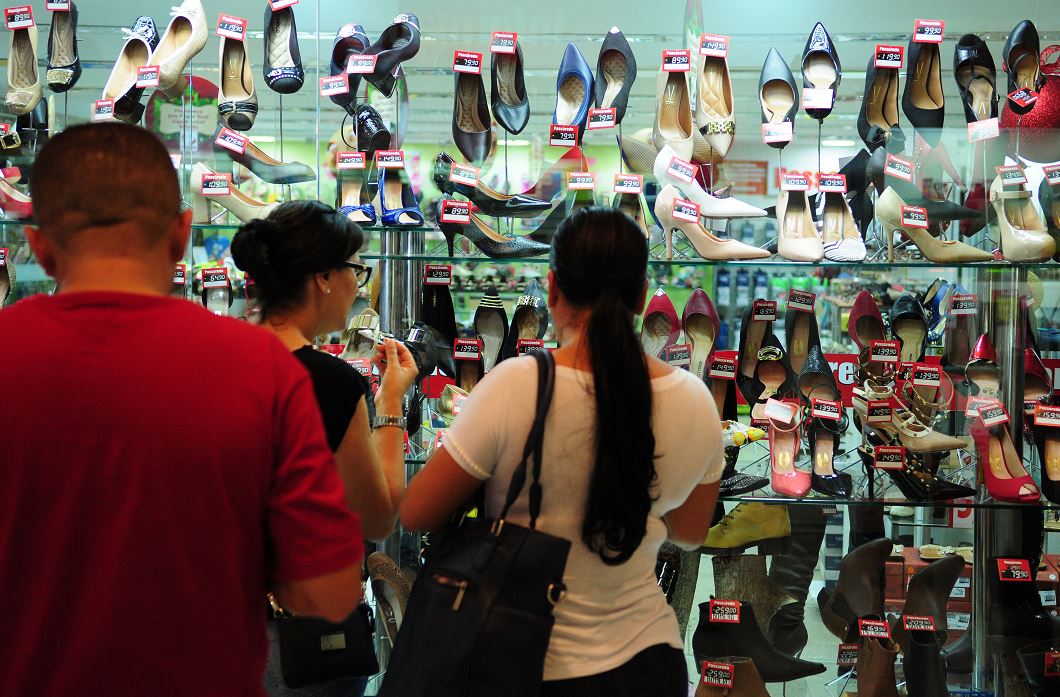RIO DE JANEIRO, BRAZIL – The Intended Household Consumption (ICF) in Brazil rose 11.1% in one year, according to a survey released on Tuesday (19) by the National Confederation of Trade in Goods, Services, and Tourism (CNC). From April 2021 to the same month in 2022, the index rose from 70.7 to 78.5 points.
It is the highest ICF level since May 2020, when the indicator reached 81.7 points. Economist at CNC, Fabio Bentes, says that, despite the trend indicated by the numbers, the real consumption growth may not appear in practice, influenced by economic factors.
“The study shows that people view consumption conditions a little more favorably. Compared to the recent trajectory, it’s an improvement over the critical situation that presented itself in the worst moments of the pandemic,” says the economist.

“On the other hand, we know that high inflation complicates the rise in consumption, as does the rise in interest rates, making credit more difficult.”
The CNC’s information is obtained based on 18,000 questionnaires, analyzed monthly. The index below 100 points indicates a perception of dissatisfaction of the interviewee, while above 100 (with a limit of up to 200) indicates satisfaction in terms of employment, income, and consumption capacity.
According to the CNC, in April this year, the index showed the fourth consecutive monthly increase of 2.7%. Despite the growth, the ICF has been below 100 points since April 2015, reaching 102.9 points.
Among the indicators surveyed by the survey, there was a positive highlight for Current Employment, which rose 16.9% in a year and reached 103.9 points. From March to April, the index that grew the most was Professional Outlook (5.7%), reaching 94.9 points.
Bentes says that the economic indicators have shown a recovery of the economy to levels similar to the end of 2019 and early 2020.
“We realize that the turnover in trade has been evolving and wholesale prices are rising, even if slowly, but the GDP forecast this year is stable, growing only 0.5%. So I think we are returning to pre-pandemic levels, but the positive numbers are due more to the very degraded situation in 2020 than real economic growth,” he says.
For the CNC, despite the recovery, the uncertainty about the future caused by the war in Ukraine and by internal economic difficulties generated a slowdown in advance of Current Consumption, which grew only 1.2% in one month.
It was similar to the Consumer Prospects, which had the smallest positive monthly variation, only 0.1%.
The only indicators that fell were the Momentum for Durables, with a 4.3% decrease, and Access to Credit, which fell by 2.1%. According to economist Fabio Bentes, the increase in interest rates makes access to credit more difficult.
In March this year, the Central Bank’s Monetary Policy Committee (Copom) announced the ninth consecutive increase in the basic interest rate (Selic), from 10.75% to 11.75% a year.
The CNC survey is composed of seven items. Four of them – Current Employment, Current Income, Time Purchase, and Current Consumption Level – compare the consumer’s perception to the same period last year.
The perspective of professional improvement is made for the next six months; consumption expectations for the next three months; and the acquisition of durable goods refers to the current moment.
With information from CNN

